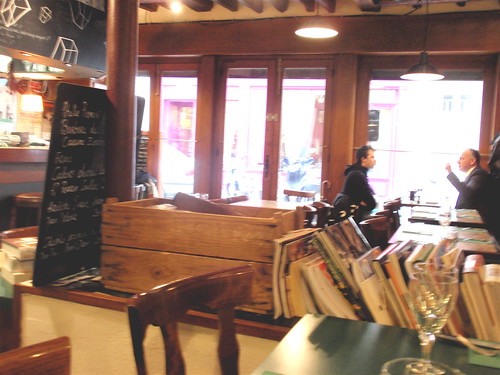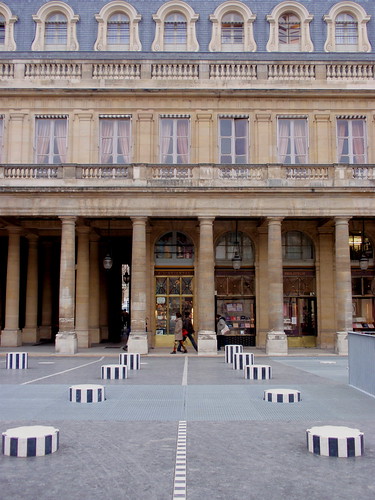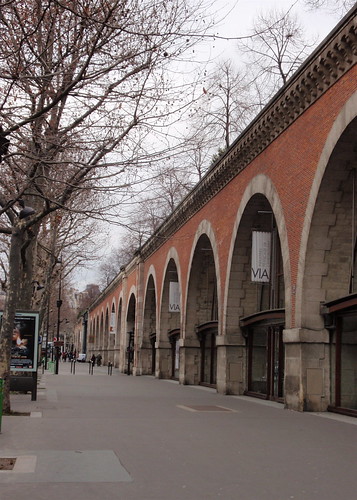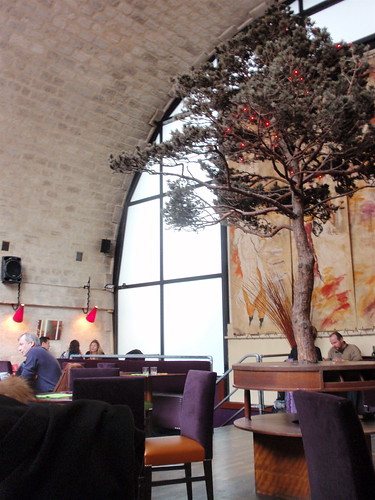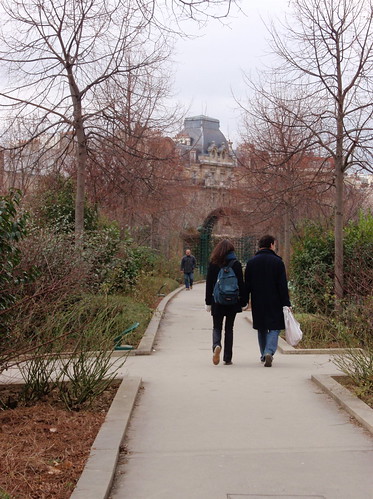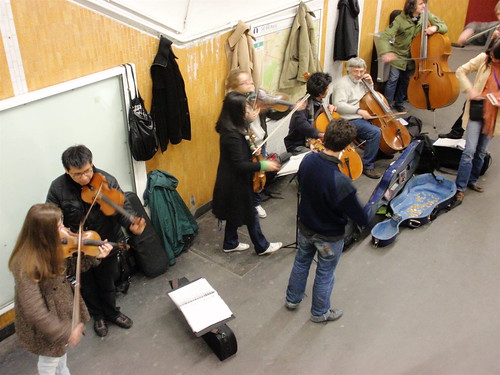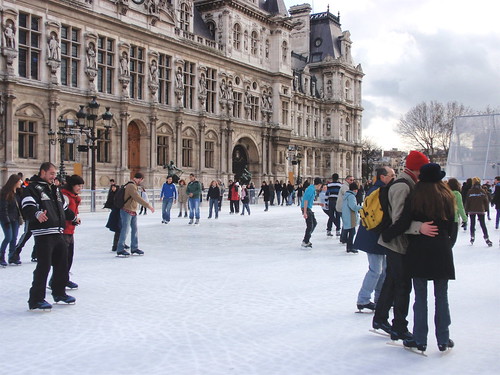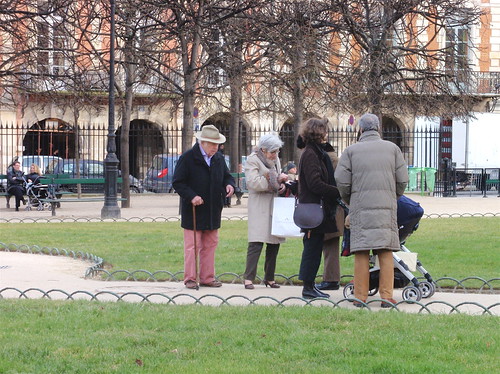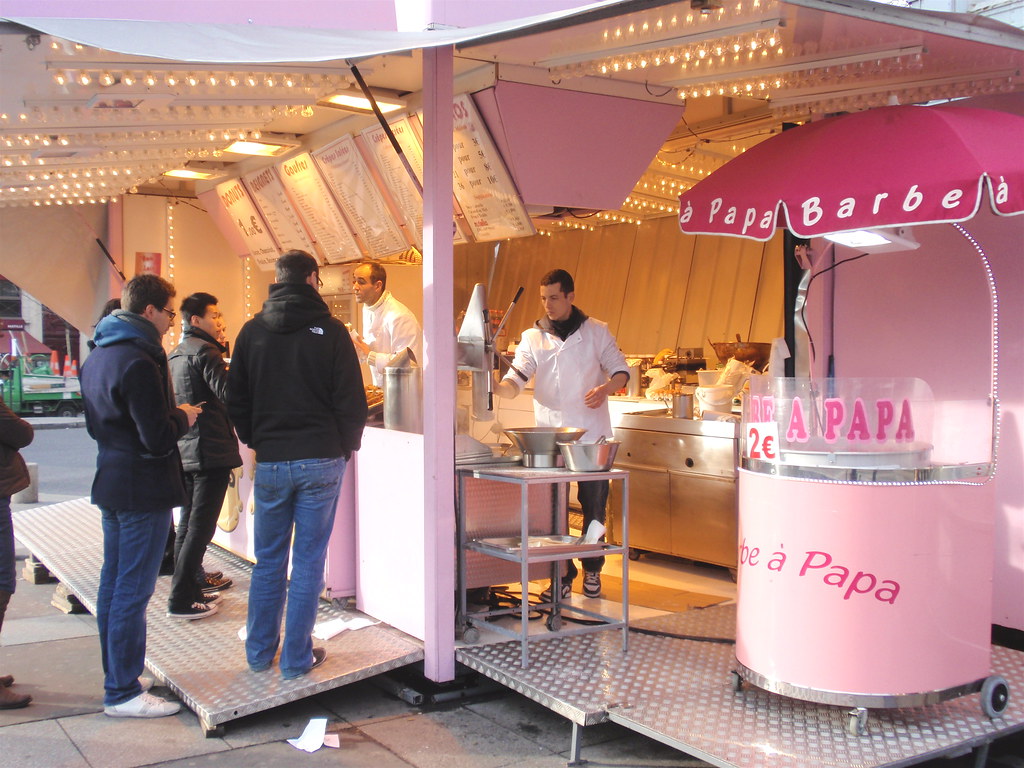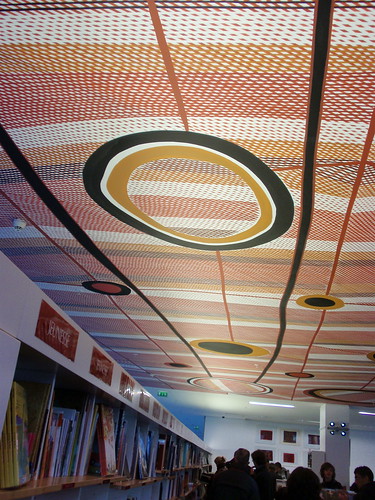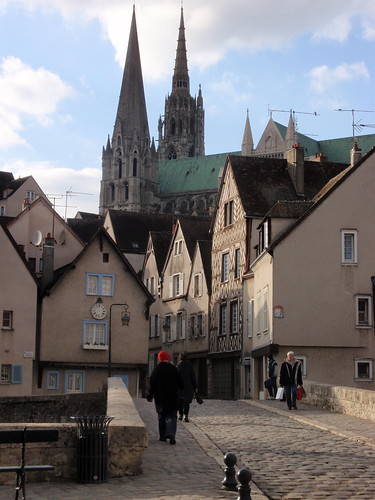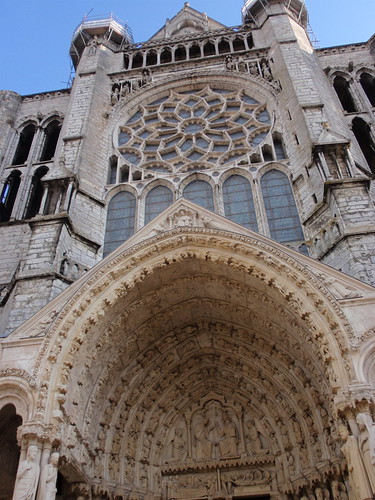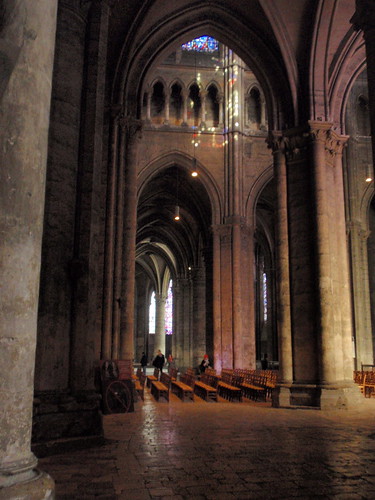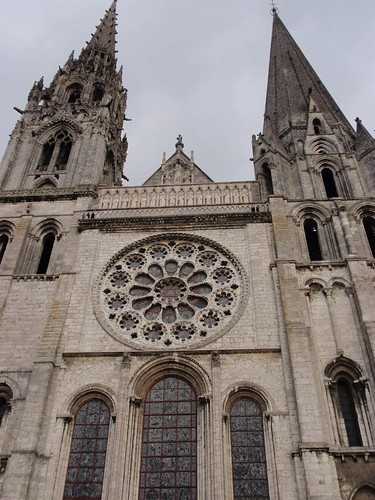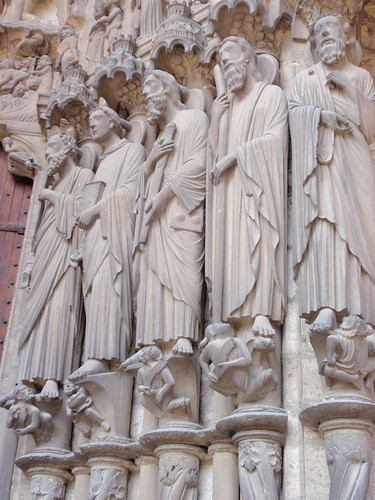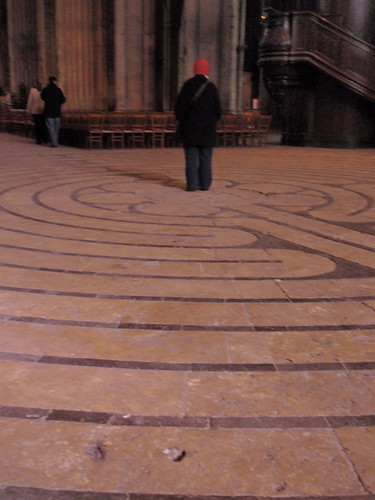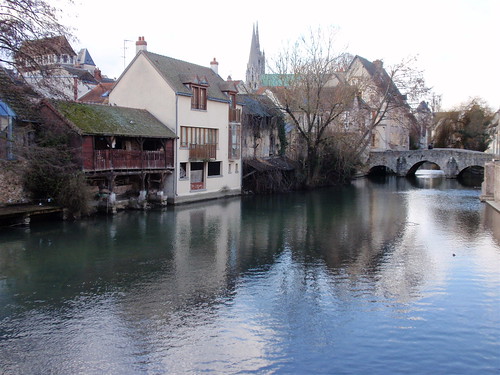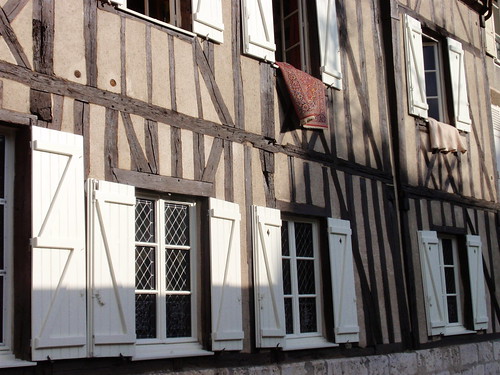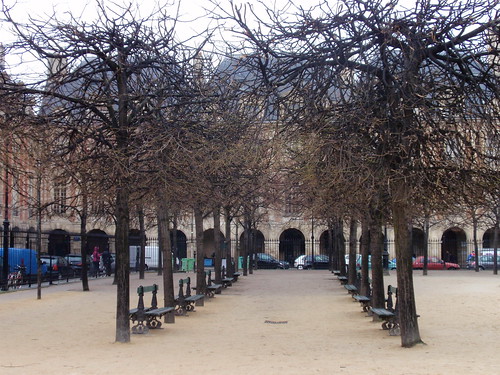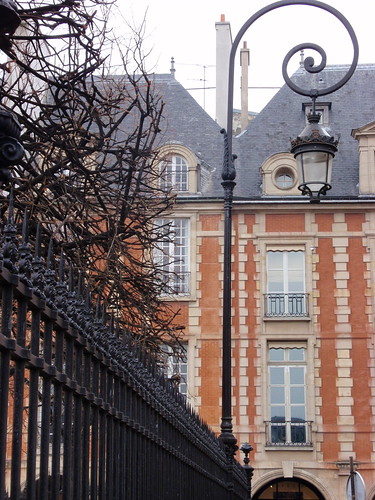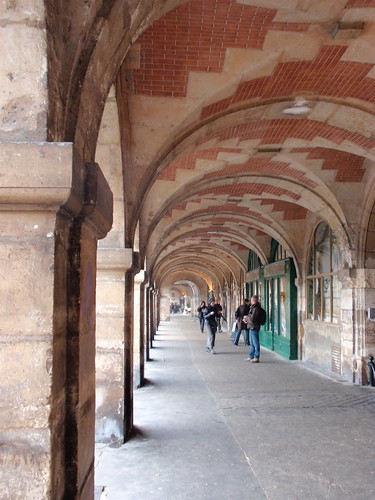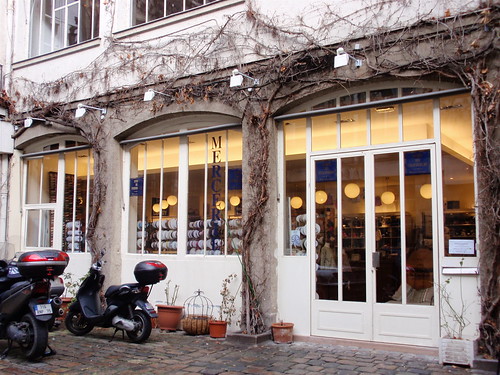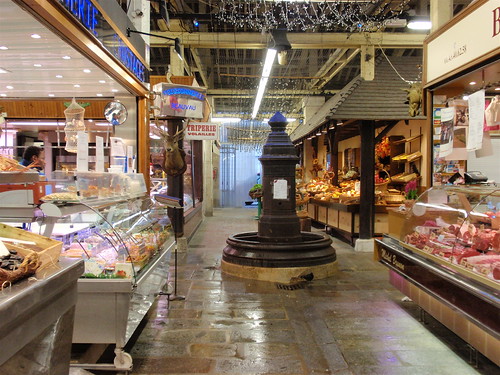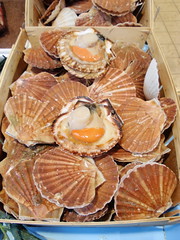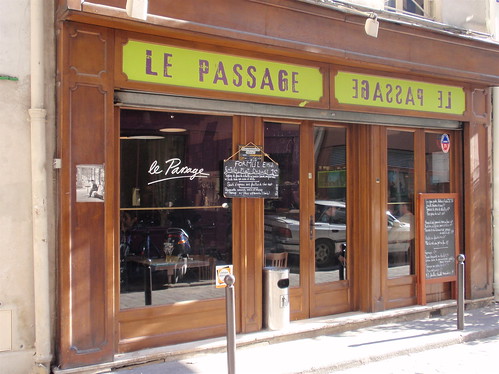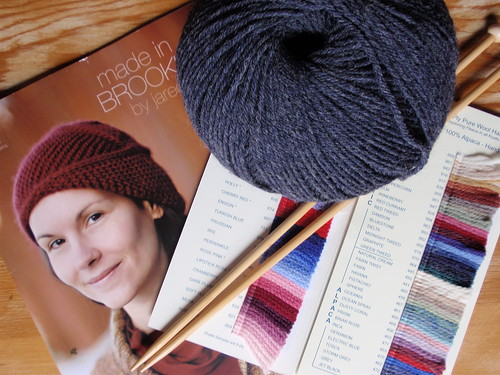I've long had a desire to have a meal at Bofinger - a very well-known brasserie that's located quite close to where we're staying. It was established in 1864 and developed its present Belle Epoche decor - a dome of stained glass, brass light fittings, wood panelling - in the early twentieth century.


[These are really bad photos - at the limits of both my camera's and my own photographic capacity. Maybe the website can give you a better idea of the restaurant's grandeur].
Over time Bofinger's come to feature in every guidebook on Paris, and I feared I might have missed my opportunity to catch it at its best...or even at its good. There have been recent bad reviews, particularly claiming disdainful treatment of tourists by the waiters, so when we decided to lunch there today I wasn't sure what we would find.
But everything was fine. Possibly this is the advantage of being a tourist in the depths of winter. The other diners around us seemed to be locals, and despite our lack of French, we were extremely well-looked-after. It's the kind of place where the waiters anticipate your needs and where food is presented with old-fashioned flourishes. As well as delivering the food the waiters performed such tasks as filetting fish before presenting it to the diners and mixing minced (raw) steak with egg and sauces for steak tartare. I started with 6 Brittany oysters, and they were served with great ceremony on a bed of ice on a raised stand. The main course was a rich carbonnade of beef with simple boiled potatoes and parsley, and the dessert was the French nursery food favourite of ile flottante - a lightly cooked cloud of meringue floating on a bed of custard and scattered with caramelised almonds.
To compensate for all the rich food we revisited the nearby Viaduc des Arts and walked the whole length (maybe a couple of kilometers?) of the promenade plantee - the spectacularly planted walkway that's been created on top of the disused nineteenth century railway viaduct. This is a wonderful notion that's subsequently been copied in other cities. It's such an escape from the bustle at street level, and for us has the added advantage of being local to where we're staying. The promenade looks beautiful in its stark winter state, but the trees were beginning to bud, there were clusters of bulbs (daffodils?) preparing to bloom, and hundreds of rosebushes had just been pruned in preparation for their next blooming.

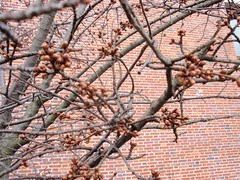

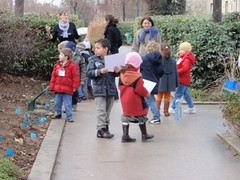
You also get some interesting views of the surrounding neighbourhood, not least of which is this astonishing sight of the rooftop flourishes of a local police station!
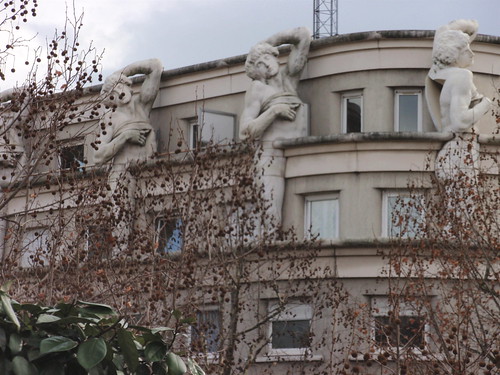
I'm off to Cologne for the next few days to visit friends. I'm not taking my lap-top, so there'll be a blogging break for a while. Maybe some interesting Franco-German comparisons on my return?
